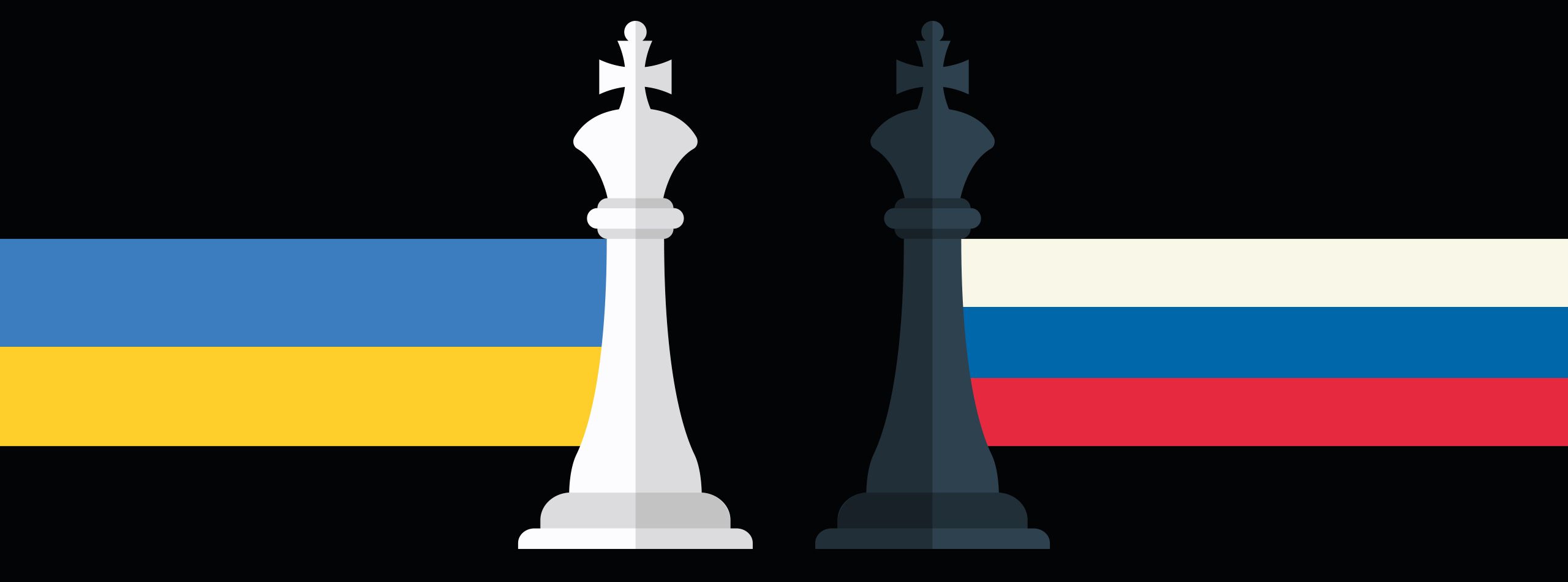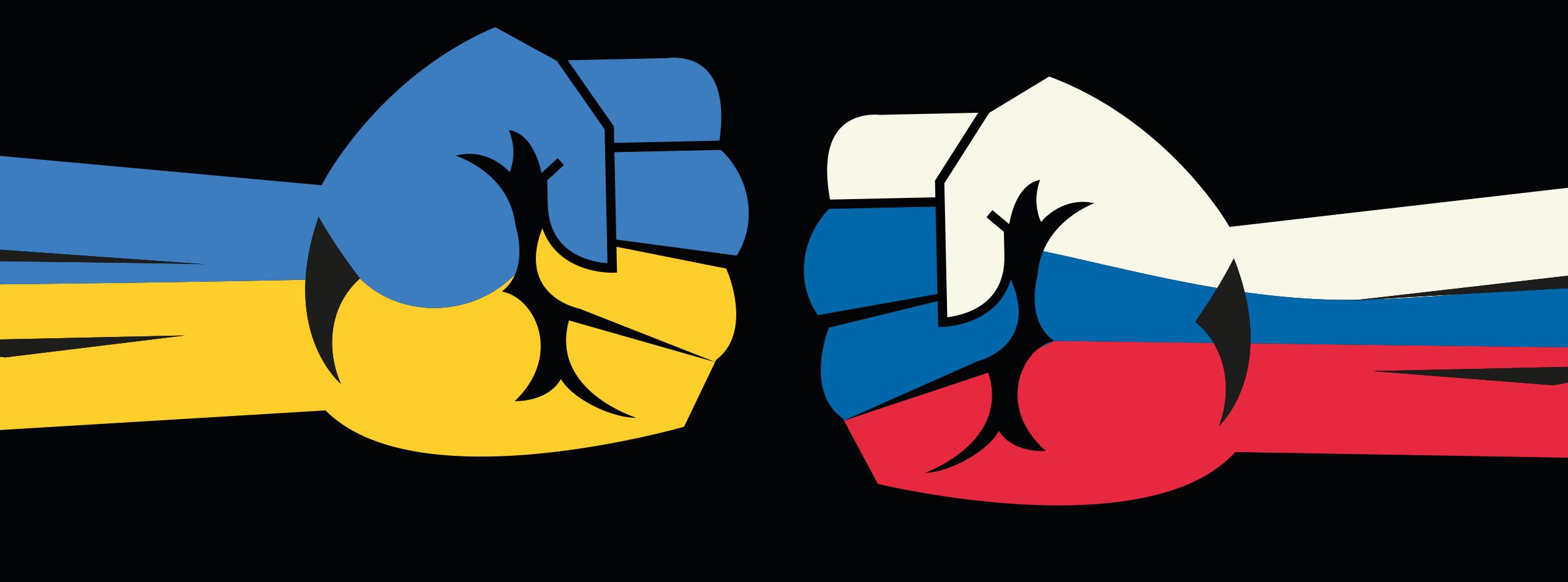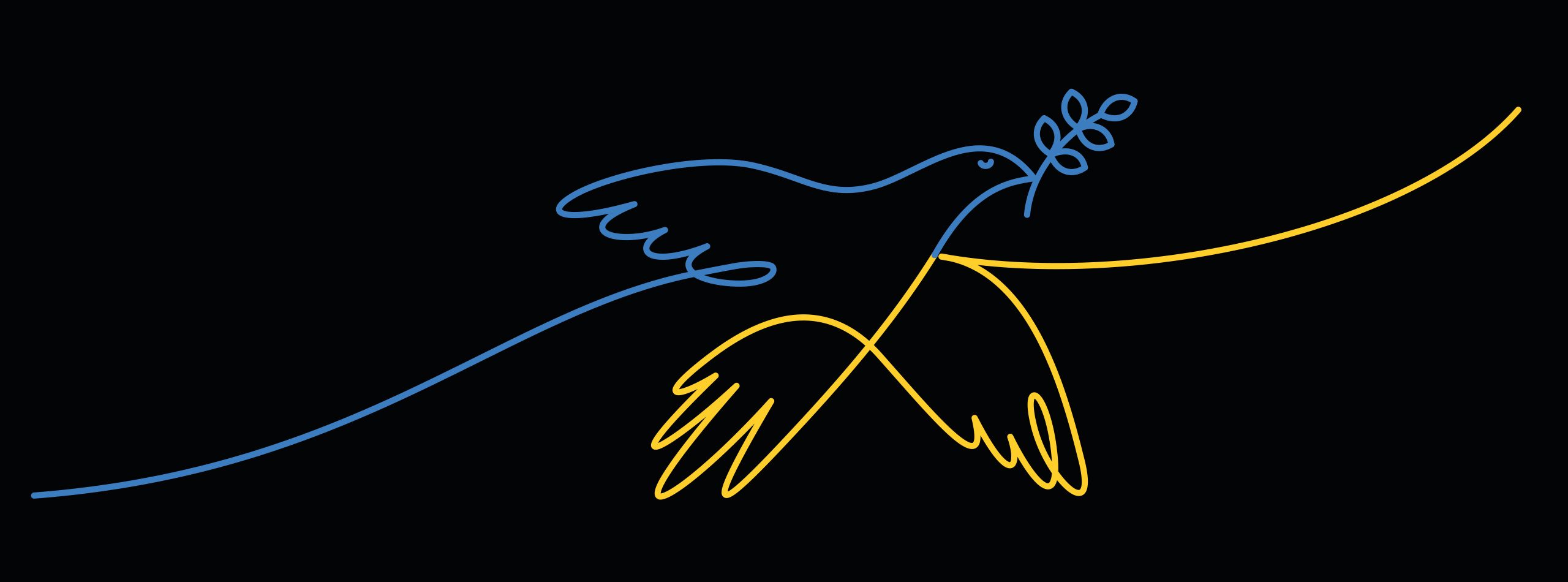THE WAR IN UKRAINE ONE
YEAR ON
Co-Chairman of UDSS General Sir Richard Lawson
Barrons, KCB, CBE considers the current situation
and the possibilities of an end to the conflict

When Russia invaded Ukraine in February 2022 nobody expected it would last this long, certainly not Russia - where officials drafted the seating plans for the victory parade within two weeks. Few observers thought that Ukraine could hold out against its much bigger neighbour in a replay of the incursions of 2014. Yet here we are looking aghast at a war with over 300,000 casualties more likely than not to run throughout 2023.

A lot has been learned, or more accurately relearned, in the way the fighting has played out. Perhaps the most cardinal point is that anybody who claimed that Europe had gone post-conflict at the end of the Cold War in 1989 has been comprehensively disappointed. We are reminded that war is an aspect of the human condition as brutal, feral, dangerous, and generally disappointing today as it has been throughout human history. The nature of war is completely at odds with how we aspire to conduct our lives as individuals and as states, as fighting destroys habitats built up over centuries in seconds and kills hundreds of thousands of men, women and children. This is happening on the doorstep of the European Union and NATO; it must tell us that war is still capable of choosing us no matter how much we would prefer not to choose war. Irreconcilable narratives and ‘red mist’ trump any number of diplomatic arguments against fighting.
The Ukraine war also reminds us that big wars are largely fought, lost or won by civilians, not professional regular forces. The sort of professional military interventions, far away and bounded by time, cost and risk, that played out in Iraq and Afghanistan were not wars for national survival. Both sides in Ukraine are fighting with armies built from citizens at very short notice, mobilising civil society and industry behind them. War is so much more than armed forces fighting, it demands all levers of available power: the military plus all the things governments can do and all the influence found in the private sector. The war in Ukraine quickly touched every corner of that country and is now doing the same in Russia as the ‘Special Military Operation’ is recast by Mr Putin as a struggle against NATO for Russia’s place in the world.
Big war is not just about mass and endurance, it is also about innovation. The way that Ukraine has harnessed the Internet and digital technology, seen most in the very rapidly developed apps operating over Elon Musk’s Skylink, shows how digitally literate citizens can apply their talents to protect their country. This is as significant as the supply of advanced weapons from NATO. The wider truth here is that the transformation of defence and security in our time is a stiff new competition, a race to apply combinations of civil sector-led digital technology to how war is deterred and fought.

The comfort of the post-Cold War era in Europe promoted the sense that if war had to occur it would no longer really require ships, tanks and aircraft because it would all be about cyber and missiles. They have indeed been an important part of the fight in Ukraine, but the battlefield is still dominated by artillery, bullets, armour and real people killing and being killed. This reminds us that although the nature of war never changes, how it is fought, its character, changes all the time with technology, thinking and circumstances. In Ukraine today the full orchestra of war is at work, combining the conventional instruments familiar for more than a century with an important new leavening of Digital Age technology.
This is the first big war that was essentially transparent even before it started. The combination of what is seen from space, captured from the Internet and fused with traditional forms of intelligence-gathering makes the battlefield an open book in many ways. This does not extend to knowing what is going on inside the heads of key decision-makers, but the data comprehensively showed that an invasion would occur, and data has marked its passage ever since in detail. The West’s failure to believe its own data in February 2022, when many leaders just preferred to insist war was unthinkable, can be added to the failure to equip Ukraine to deter an invasion even after the clues of 2014, but there is no doubt about what is happening now on the battlefield.
War is so much more than armed forces fighting, it demands all levers of available power: the military plus all the things governments can do and all the influence found in the private sector.
Modern armed forces were already on the path of transitioning to the ‘primacy of precision.’ This recognises that missiles in attack and defence, long and short range, increasingly trump established military platforms, like ships, tanks and aircraft, as well as large and vulnerable bases and headquarters. What has become much plainer in Ukraine though, is that nobody can afford to hold enough of these expensive weapons on their shelves to keep up with the rate of use once the fighting starts. Right now, both sides are struggling with a shortage of missiles and ammunition; both sides know how limited the industrial production available to them is over the next two years. There is now another race: the race for cheap precision in things like single-use exploding drones that cost tens of thousands of dollars not millions. This is partly because they can be made more cheaply and are therefore affordable in larger numbers, but mostly because wider industry can be repurposed at speed to ramp up production of these easy to make machines when required. There is a big lesson here for how other armed forces look at equipping for war in the future.
There is no doubting the sharp reminder that war means making the homeland protected and resilient. The Russian assault on the Ukrainian electrical grid is designed to break the will of the people to support the fight over a very cold winter and expedite the flow of refugees to Europe. This is manifestly failing, but it does show that war is still made by bearing down on the daily life of citizens, rather than only trying to kill the opposing Armed Forces. This is causing many nations to take a very hard look at their own cities’ air and missile protection as well as cyber defences. The solution ranges from extremely sophisticated equipment, such as the US Patriot system designed to shoot down ballistic missiles, to the urgent search for ways of countering cheap drones equally cheaply. For many in Europe, the expectation must be that however this war ends it will not conclude a very difficult confrontation with a bitter and aggressive Russia. Restoring homeland resilience against confrontation and conflict is once again an urgent national priority in Europe.
We are also going to see the most significant transformation of what an army is capable of for over 100 years. Armies today are mostly equipped and trained for the sort of close battle in which tanks, armoured infantry and armoured artillery are the currency, tracing a path back to the First World War. The war in Ukraine has shown that this capability is still essential to taking and holding ground, but it is not as decisive as it once was. This is because seeing the battlefield at longer ranges and striking with great precision means that the battle beyond direct line of sight is now more significant. The crushing effectiveness of the US HIMARS system, able to destroy the most vital Russian targets in at ranges up to 50 km in Ukraine – and given different ammunition capable of doing at 150km and more – has set new benchmarks.
Armies will still need tanks, infantry and artillery, but on the back of the Digital Age driving robotics and autonomy these groupings will follow a path to become teams of manned, unmanned and autonomous equipment. The new ‘human-machine teams’ will also deliver the air and missile defence, the long range surveillance, the long-range precision strike, and the information technology that connects it all up. Success in this transition will separate the winners and the losers in twenty-first century conflict.
Armies will still need tanks, infantry and artillery, but on the back of the Digital Age driving robotics and autonomy these groupings will follow a path to become teams of manned, unmanned and autonomous equipment
After almost a year of bitter and so far inconclusive fighting, the question is inevitably asked about how and when this ends? There isn’t an easy or obvious answer to this, war is always an unscripted combination of physical, practical things conjoined with emotional and psychological factors and all tilted by the passage of events and sheer luck. Right now, both sides are gathering strength, recovering from a very difficult year and setting themselves up for offensive action as soon as they feel able in 2023. This race is about how to get more citizens trained and in the field, and about how Russian industry on one hand and Western industry on the other can restore the huge stocks needed of weapons, ammunition and other equipment. The war would end very quickly indeed if the West elected to stop supporting Ukraine, but this is inconceivable given the appalling consequences that would accrue for Western security, prosperity and values, quite apart from the devastating effect on Ukraine. Russia is gearing up industry and society quickly too. It is far more likely that more big battles lie ahead in 2023.
There is nothing in the nature or character of big, difficult wars that makes a rapid or a decisive victory necessarily the most likely outcome. In Ukraine, both sides intend to inflict a decisive breakthrough and neither side intends to lose what they currently hold. Both sides know that it’s not just time that is in play, the time it takes to really gather up enoughstrength for example, but also timing that matters: establishing when as well as where is the most propitious moment to act and – equally vital – when to stick or hold. If decisive success remains elusive in 2023, then dogged, grinding attrition in the hope of better things to come at some future point is more likely than capitulation.

The war will likely only end when one or both sides accepts that it has nothing more to gain from fighting. Neither side is anywhere close to this position now. If that point does come, we should anticipate lengthy, enormously difficult and emotionally charged discussions about what ending the fighting really means for all concerned. There will be deep wounds to salve on both sides. A reading of the history of the Versailles Conference of 1919 in the aftermath of the First World War is instructive. We must also consider that the moment the shooting stops the massive challenge of disarmament, demobilisation, re-integration and reconstruction will arise. Although the political and diplomatic bandwidth to address this now seems surprisingly small, leaving it to the day the fighting stops diminishes the confidence needed to stop fighting and results in a huge delay, creating a vacuum which malevolent forces are quick to fill. The cost of restoring the lives and habitat of millions of people in Ukraine will be as daunting as the cost of the fighting, and just as important to get right.
